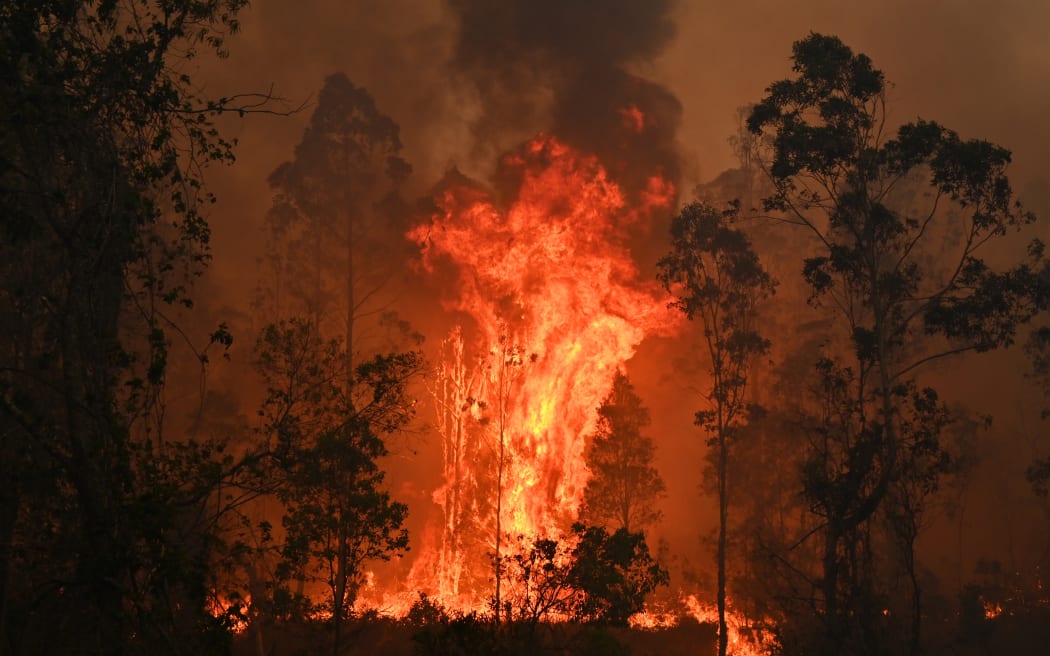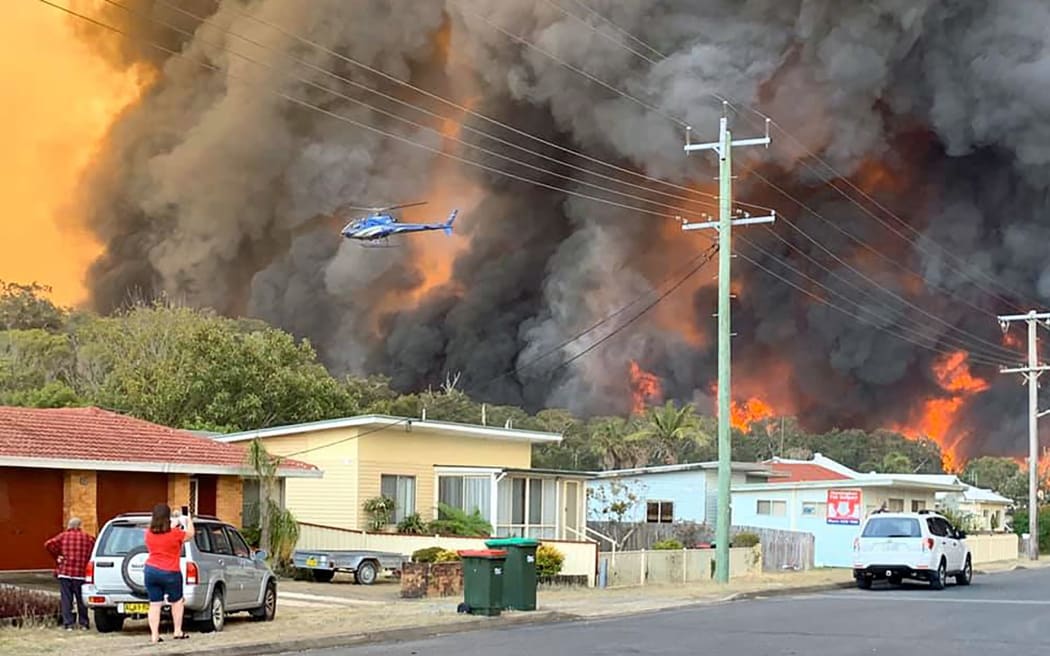Study Finds Black Summer Wildfires May Have Influenced Rare Triple La Niña Outbreaks

By Tyne Logan
photograph: AFP / Victorian Government
Large amounts of smoke aerosols from the 2019-2020 Australian wildfires may have contributed to the occurrence of rare triple-bottom La Niña events.
In a study published in Science Advances, the researchers ran climate models with and without wildfire emissions to reveal the role that months of wildfires played.
The idea for this study came from research on emission reductions due to the COVID-19 pandemic.
Lead author John Faslo of the US National Center for Atmospheric Research said the team had a hunch that the wildfires may have had a greater impact on climate than the pandemic’s reduction in emissions.
And they were right.
“In fact, we kind of underestimated the impact of wildfires,” Faslo said.
“But what we found in the first two years was actually quite interesting. We had a La Niña-like response.”
It was the first time wildfires were widespread enough to affect climate models.
The discovery could provide important insight into the link between past large wildfires and climate change, when the necessary satellite data was not available, Faslo said.

photograph: AFPMore
The clouds lighten and the surface cools
During what became known as Black Summer, wildfires of unprecedented and uncontrollable magnitude devastated the landscape, blazing with extraordinary intensity and magnitude.
Over the course of months, the event frequently sent huge amounts of smoke aerosols into the atmosphere, comparable to large volcanic eruptions, and was visible from space.
At one point in December, there were more than 100 simultaneous fires in New South Wales alone.
From August 2019 to July 2020, continuous fires caused clouds to become brighter, thicker and longer lasting, resulting in a cooling effect across the southern hemisphere, Faslo said.
“So when you introduce smoke into the system, all of a sudden you have all those little particles for the clouds to condense,” he said.
“And two things happen. One is that the cloud droplets get brighter, but it also means that when they collide with each other, it doesn’t rain as quickly from the atmosphere.
“So cloud droplets stay in the atmosphere, don’t get very big, and don’t rain, so more sunlight is reflected back into space.”
He said the process resembled the effects caused by a large volcanic eruption that was large enough to push ash particles into the stratosphere.
But Faslo said the climate impact of wildfires is primarily due to smoke emissions in the troposphere.
A chain reaction may have caused the La Niña phenomenon
According to Faslo, the effects of wildfire emissions lasted well beyond the relatively short time it takes for particles to pass through the troposphere.
Cooling the Earth’s surface through clouds triggered a chain of events that created “lasting memories” in the ocean and atmosphere, he said.
“This likely created favorable conditions for a La Niña to occur in 2020.”
This is because it affected a large northward tropical cloud band, allowing the trade winds to blow beneath it. He said.
“So this links the chain of fires that led up to the onset of the La Niña event,” Faslo said.
“The transequatorial trade winds cause this sudden upwelling of the ocean, and this is the La Niña phenomenon.
“Forest fires have roughly doubled the likelihood of a prolonged La Niña event.
“They did indeed substantially increase both the probability and severity of La Niñas over at least two years.”

photograph: AFP Photo/Kellyanne Woosterbeek
A trio of La Niñas began in 2020 and lasted until 2022, dominating weather patterns across Australia and bringing record flooding to eastern Australia.
Making sense of the ‘strange’ three years of events
Faslo said the study could provide an explanation for some of the “anomalous” features of the multiyear La Niña event.
“There were a lot of very interesting things about this La Niña phenomenon,” he said.
“Long-lasting La Niñas usually follow El Niños. But that was not the case.
“This time, this La Niña phenomenon came out of nowhere.”
When La Niña first hit in 2020, Dr Faslo said it was a highly unpredictable event.
“So, as of June 2020, the main US forecasting agency, the National Oceanic and Atmospheric Administration (NOAA), was predicting no La Niña event under neutral conditions,” he said.
“After all, they were on the eve of this triennial record event that resulted in an unusually strong cooling anomaly in the Pacific.
“So many of the oddities surrounding this event have made us wonder what else was going on.”
Other studies have found that Black Summer wildfires may have damaged the ozone layer, causing deep, long-lasting pits and the highest stratospheric temperatures in 30 years.
– ABC
https://www.rnz.co.nz/news/world/489721/black-summer-bushfires-may-have-influenced-the-onset-of-rare-triple-dip-la-nina-study-finds Study Finds Black Summer Wildfires May Have Influenced Rare Triple La Niña Outbreaks
